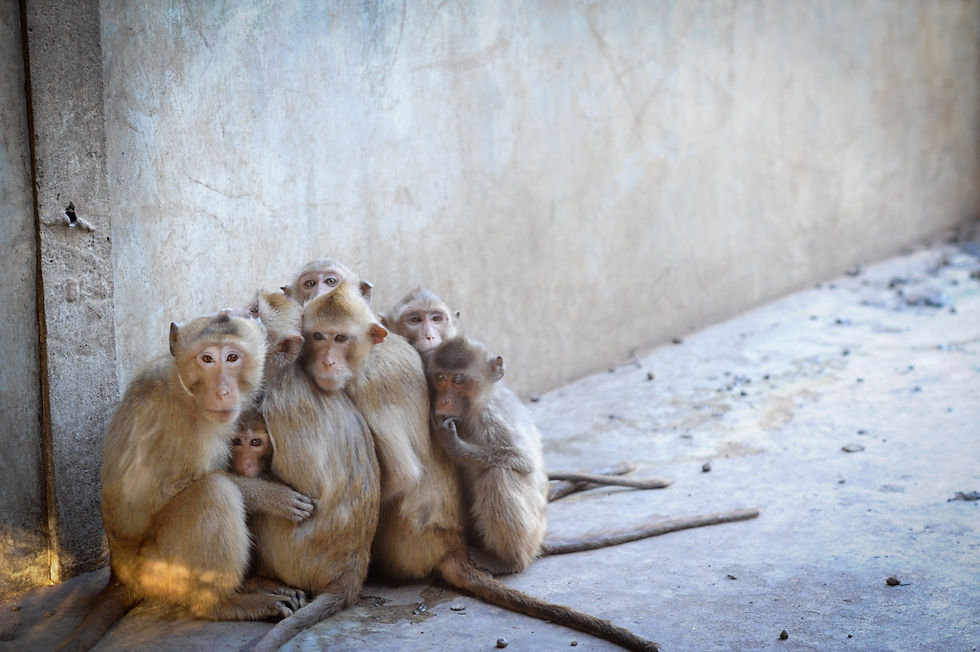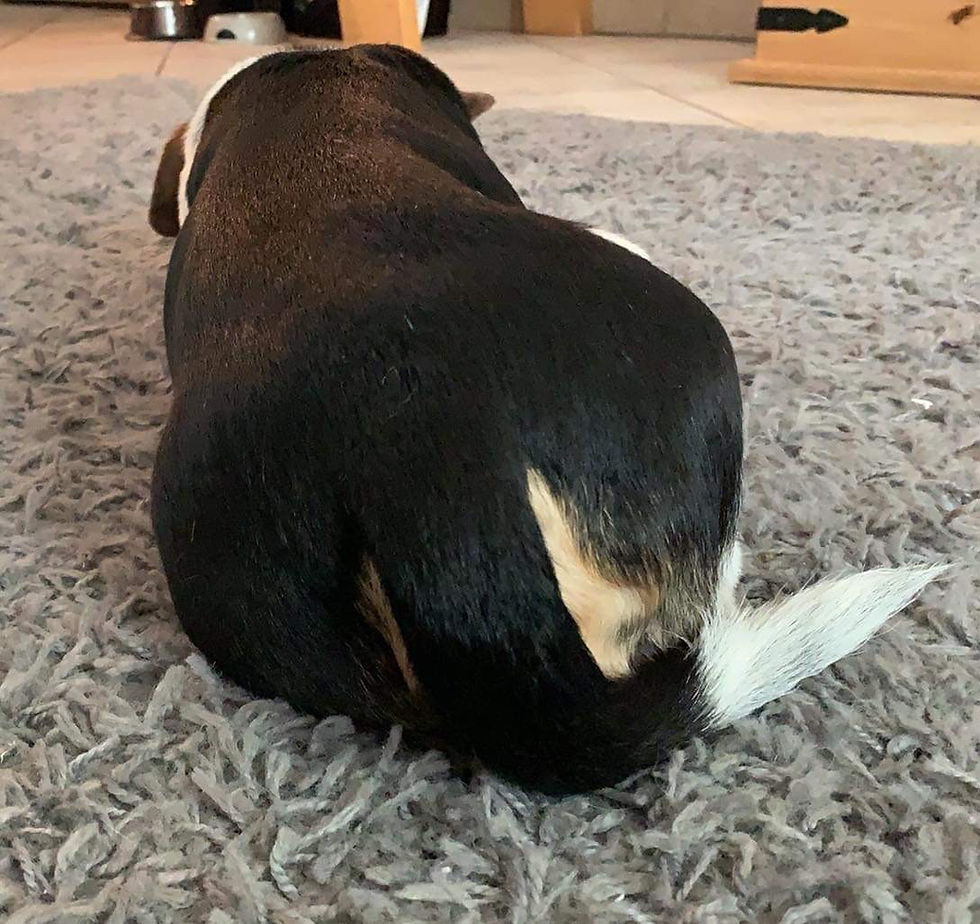
Two days ago, vegan activist James Aspey posted a contentious photo of himself, hands crossed in front of him at his wrists, inside a slaughterhouse in Bali with multiple pigs in various stages of being brutally killed and dismembered by a worker in the background wielding a sharp knife. The caption read, “Don’t be mad at me for just standing there, your obsession with bacon is why they’re here in the first place."
Most people commented to thank Aspey for his work and for standing in solidarity with the victims of systemic torture. But some users expressed concern and wanted to know why he included himself in the photo.
Instagram user bobblytree asked, “James, why isn’t the camera focused solely on the victims? We already steal everything from them. Surely we don’t need to steal the attention from them as well by featuring in pictures alongside them as they’re murdered.”
And that’s a perfectly valid question. But it’s Aspey’s answer that opens up a remarkable discussion about the use of digital media in animal rights activism.
Aspey replied
“Purely strategy to get more reach. I would love nothing more than my entire Instagram feed to be filled with only the victims but unfortunately that isn’t going to get engagement and therefore will reach less people with the message they need […] It’s how Instagram and social media works unfortunately. Call it what you want, I don’t care, I know more people will see this and be influenced because I put myself in the pic as well. Or at least based on my 6 years experience and study of social media that’s my conclusion and understanding of it. It’s not narcissism, it’s strategy.”
To his credit (and possibly the surprise of some readers here), I agree with Aspey! There is absolutely no question that when you aggregate the number of post ‘likes’ over the past year, the most successful ones are the ones featuring Aspey alone. At the time of this writing, that one in particular garnered 28.3K likes. But (as ever with me) a few observations about that...

First, we should acknowledge that in this scenario, we measure engagement in terms of actual likes. If that’s the metric, then Aspey is inarguably correct. But if we define engagement the way that many social media professionals do, that’s passive engagement.
Active engagement is more commonly measured in terms of actual comments. After all, it takes more effort to pull up your keyboard and comment rather than double tap a post and keep scrolling. And by that metric, Aspey’s engagement is all over the place. Food videos, muscle flexing, animals…you name it, comments are inconsistent and range from the hundreds to the thousands and back to the hundreds again.
Second, Aspey made a surprisingly stark admission in stating that more people will see and be influenced by photos into which he has inserted himself. Again, a correct assessment on his part.
He openly confesses to being the focal point in these photographs. And as any photographer knows, once you have established the subject of a photo, everything (and everyone) else becomes background. And as such, those pigs are props.
In terms of marketing, Aspey rightfully observes that he is the ‘product.’ He is the primary draw that keeps followers coming back. In this way, he employs the social media model of, say, a Kim Kardashian West.
I certainly don’t make him wrong for that. But I don’t know why an activist would be content to exist as Kim K. Why is that understanding of social media the place where he stops?
For someone who claims to understand the economy of social media, he doesn’t seem to make any attempt to de-center himself as the catalyst or at least explain how he might shift that focus. He just seems content to allow the victims to share his spotlight with him, which likely is why some followers questioned him.
By comparison, take civil rights activist and co-president of the Women's March Tamika Mallory. With just over 200k followers, her Instagram account is comparable to Aspey's (and her engagement by any metric outpaces his, but I digress).
Yet of the posts where she focuses the content on herself (which are few), she is promoting a speaking engagement...quite fair considering that any activist would want to promote opportunities for education and building on-the-ground grassroots community. The rest of the time, she focuses her content on the actual victims of systemic violence.
But there are other aspects of Instagram culture for animal rights to explore as well. Interestingly, another user shelivesart said
“If someone bares witness to cruelty, they naturally should be included in the pictures that are used as proof. The amount of strength it takes to go where none of us are willing to go, should not be diminished or downplayed. I think we forget that the humans that expose this madness are suffering too, and to question their motives is insulting and quite honestly, destructive.”
So okay, yikes. There’s a lot to unpack here.
First of all, questioning things is fundamental to growth and learning. To imply that questioning people in positions of authority or leadership is destructive is precisely the type of thinking that gives rise to authoritarianism (which is a whole 'nother post).
Moreover, this is an utterly confusing position to hold. Photojournalists have been taking pictures of atrocities for nearly as long as the camera has existed. And at this time, I honestly cannot recall a photographer who documented war crimes by way of the selfie.
However, we don’t even have to journey into the realm of war crimes. Photojournalist and humane educator Jo-Anne McArthur is known for her We Animals project, a photography project documenting human relationships with animals. Her first book, We Animals, was published in 2013, and her second, Captive, was published in 2017. McArthur has been awarded a range of commendations for her photography and activism, including the 2018 Wildlife Photographer of the Year People’s Choice award.

According to her Wikipedia page, McArthur conceived of the We Animals project around 1998 after an encounter with a macaque monkey chained to a windowsill in Ecuador. She photographed the monkey as she was appalled at the treatment, and "knew that the way [she] saw our treatment of animals was important, and [she] wanted to share that point of view."
I’ll repeat that last part, McArthur said she wanted to share the animal’s point of view! And this is, I think, at the heart of any criticism, not a conspiracy against James Aspey. Animals are quite capable of telling their own stories, and can do so more authentically than we ever could without the need of our intervention if we create conditions for them to do so.
Of course one can argue that photojournalism and social media are two very different (pun intended) animals, and they would be correct to say that. But the assertion that photographer and subject should share the same space by way of legitimizing their coverage is surprisingly common. And to remove yourself from a central role does not in any way downplay or diminish the trauma experienced by bearing witness.
Overall, this entire discussion actually misses a vital point about animal rights activism as it exists in a digital media space and it is the fact that social psychology teaches us that (wait for it) images of happy animals living their best lives actually outperform graphic images almost every single time. In fact, repeatedly exposing people to graphic images and videos tend to desensitize people to violence, as has been demonstrated by multiple studies. And despite the old adage that "if it bleeds, it leads," people are demonstrated to prefer happy stories, as observed by such data journalists as Seth Stephens-Davidowitz.
There is a reason why accounts like The Dodo leave all the animal rights accounts in the dust. Likewise, there is a reason why social media influencer culture has given way to the emergence of the Petfluencer as discussed in my post about Grumpy Cat.
I already know some people will probably look at my own Instagram account with a very meager following and conclude that I really don’t know what I’m talking about at all. And that’s fine!
But my Instagram is probably most accurately characterized as shitposting. I’m not looking for an audience so much as I’m trying desperately to capture images of my dog’s butt and post snippets of hilariously disastrous conversations.

In any case, I hope James Aspey and others take note of this. After all, he’s been studying social media for 6 years.
Also, fun fact: The record for the most-liked Instagram post of all time is (wait for it), a photograph of an egg, which apparently surpassed a photo of Kylie Jenner and Travis Scott's baby girl in January 2019 to hold the record for over 200 days at the time of this writing.
...Do with this information whatever the hell you will. I might study social media myself, but there are some things which are incomprehensible even to me.
To find out more about the economy of social media, try reading Algorithms of Oppression written by author Safiya Noble. And if you want to learn more about digital media for animal rights, email me to deliver a lecture for your organization, community group or university. And, as always, if you’ve learned something from this post or any of my others, consider dropping something into the virtual tip jar on Patreon!
Author’s note: Jo-Anne McArthur was the primary subject of the 2013 documentary The Ghosts in Our Machine, directed by Liz Marshall. She is also the co-founder of the Unbound Project, which aims to celebrate and recognize female animal activists.
alignersfit offers top-quality care for a perfect smile Find the best Invisalign dentist near me for a seamless and comfortable teeth straightening experience
Kaiser OTC benefits provide members with discounts on over-the-counter medications, vitamins, and health essentials, promoting better health management and cost-effective wellness solutions.
Obituaries near me help you find recent death notices, providing information about funeral services, memorials, and tributes for loved ones in your area.
is traveluro legit? Many users have had mixed experiences with the platform, so it's important to read reviews and verify deals before booking.
I like reading this blog post so thanks for sharing this here https://x.com/ideasdedibujos/status/1866690106830229828
We want to appropriately foster it from our internal world to have it in our external world. We want to work from our profound automobile accident lawyer contemplations, work on the non-noticeable energy to witness the sign in our real life.
Cleaning services often include specialized options like carpet cleaning, which helps maintain the quality and longevity of carpets. Professional carpet cleaning removes deep-seated dirt, allergens, and stains, improving air quality and aesthetics. Methods like steam cleaning or dry cleaning ensure that carpets are thoroughly sanitized. Regular maintenance prevents wear and tear, extending the life of your investment. With maid service toronto professional expertise, even heavily soiled carpets can be restored to their original condition.